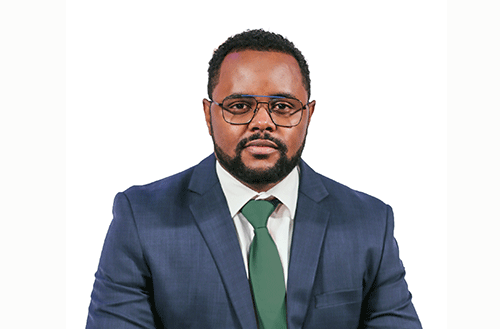For most Namibians, pension savings is one of the largest, if not the only, investment at retirement. To encourage us to save towards retirement, the government has implemented various tax incentives and protections for pension fund savings. As a result, when employees are weighing their employment options, one of the most important considerations is the pension benefit package. However, the challenge for employers is designing a pension fund in such a way that it is appropriate for the staff complement while also achieving a reasonable pension saving at retirement.
When designing a pension fund, the first point of departure is the contribution rate. As times are tough, employers tend to keep this rate as low as possible. However, with a net retirement saving/contribution rate of less than 8%, it is almost impossible to achieve a salary replacement ratio above 40%, even over 30 years. The salary replacement ratio calculates the employee’s first monthly pension payment as a percentage of their last salary, thus if the employee’s last salary before retirement is N$10,000 and their salary replacement ratio is 50%, their first pension would be N$5,000.00. Employers are urged to consider increasing their net retirement savings/contribution rates. The net retirement saving/contribution rate is the total amount the employer and employee contribute towards retirement less cost. This leads us to the second consideration when designing pension funds – cost. 2% in costs could erode up to 40% of the capital that could have been saved at retirement after a period of 25 years.
The cost involved in pension funds are usually administration fees, consulting fees and risk benefit premiums. The trick is to keep these as low as possible so that more goes towards the employees’ retirement savings. Let’s analyze the cost in a bit more detail.
Administration fees
This tends to fluctuate significantly depending on which service provider the employer selects and also the complexity of the fund. Employers should aim to keep this as low as possible by creating a simple pension fund and not building a complex pension fund that is difficult and expensive to administer. Again, we emphasize that every dollar that goes towards administration fees is a compounded dollar that could have potentially added towards a higher salary replacement ratio.
Employee benefit consultant
Perhaps a step back to ponder a contentious topic – does your company even need an employee benefit consultant? The simple answer is yes. However, it is slightly more complex than this. Most pension fund administration service
providers have some element of in-house employee benefit consultants. Thus, if you approach them directly, they have the expertise to assist in setting up what is referred to as direct pension funds. However, they tend to be biased and only suggest what their employer’s offer when clients are weighing options irrespective of the quality of service and cost. The other challenge with in-house employee benefit consultants is independence. The risk is that they are not truly independent and they may overlook service and other inadequacies of their employer. On the other hand, independent employee benefit consultants come at a premium because they offer you independence and the ability to look for the best offerings in the market at reasonable prices. Another consideration of an independent employee benefit consultant is the peer-review element. Where they monitor and ensure that the service delivery of the current provider is aligned to the service level agreement and, if not, hold them accountable. However, these come at a premium and the employer should consider if the matters above are important enough to warrant an independent employee benefit consultant. Again, every dollar that goes towards consulting fees is a compounded dollar that could have potentially added towards a higher salary replacement ratio.
Risk benefits premium
The extent of this cost is largely dependent on the number of risk benefits you select and how comprehensive they are. These include death benefit cover (usually a multiple of annual salary, e.g. 3x annual salary), disability benefits (either a lump sum or income disability), funeral benefit (member or family funeral cover), Critical Illness, etc. The list is almost endless; however, the employer also has the option to do away with risk benefits and merely offer a pure retirement saving pension benefit. Here the trick is getting the balance right between the risk benefits and the cost. The industry norms are basic death benefit, disability and funeral cover. How comprehensive each of these benefits are, is dependent on the employer. Please bear in mind that the more comprehensive the risk benefit, the more expensive it is and less money goes towards retirement savings.
Another important consideration when setting up a pension fund is the investment portfolios. The idea is to beat inflation over the medium to long term. And the only way to do that is to have exposure to growth assets. The employees average age is a good indication of the investment portfolios to select based on the timeline to retirement. For example, if the average age is 35 then most of the employees have about 25 years to retirement and they should ideally be invested in high growth portfolios, which are ideally high risk and volatile. However, if the average again is 55, then the employees only have about five years to retire and should be invested in less a volatile option that offers capital protection. The current industry practice is to have two portfolios; one aggressive, volatile portfolio where the employees are invested until 5 years before retirement and another low risk, less volatile portfolio where employees invested during the 5 years towards retirement.
In conclusion, the employer should consider a fair retirement contribution rate, keep the fund structure simple and invest in high growth assets over the long term.
* Paul-Gordon /Guidao-ǂOab is the Head of Distribution (Corporate Segment) at Old Mutual Namibia


